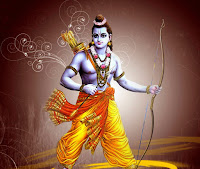Introduction
India has a rich history of metallurgical advancements that have left an indelible mark on the world. Among these, the production of Wootz steel and the creation of the rust-resistant Iron Pillar of Delhi stand out as remarkable achievements. This article explores these ancient technologies, shedding light on their significance and the advanced knowledge possessed by ancient Indian metallurgists.
The Wonder of Wootz Steel
Wootz steel, also known as Damascus steel, was renowned for its exceptional quality and durability. It was produced in ancient India as early as 300 BCE and was highly sought after by traders and warriors worldwide.
Production Process
The production of Wootz steel involved a complex process:
- Selection of Raw Materials: High-quality iron ore was carefully selected and combined with charcoal in a crucible.
- Heating and Cooling: The mixture was heated to high temperatures in a sealed furnace. The key was the slow cooling process, which allowed the formation of carbon nanotubes, giving Wootz steel its unique properties.
- Forging: The ingots were then forged into swords and other weapons, characterized by their distinctive patterns and superior strength.
Unique Properties
- Strength and Durability: Wootz steel was incredibly strong and resilient, making it ideal for weaponry.
- Sharpness: The steel could be honed to a razor-sharp edge, which stayed sharp longer than other materials.
- Aesthetic Patterns: The distinctive wavy patterns on Wootz steel weapons were not just visually appealing but also indicative of its superior quality.
The Iron Pillar of Delhi
Another testament to ancient India's metallurgical prowess is the Iron Pillar of Delhi. Erected during the Gupta Empire around 402 CE, this 7.21-meter tall pillar has withstood the test of time without significant rusting.
Construction and Composition
- Materials: The pillar is made of 98% pure wrought iron, a remarkable feat considering the technological limitations of the time.
- Forging Technique: The iron was forged using a technique that included hammer welding large lumps of hot iron to form a single, massive structure.
Anti-Corrosion Properties
The Iron Pillar's resistance to rust has baffled scientists for centuries. Recent studies suggest that a thin layer of misawite, a compound of iron, oxygen, and hydrogen, forms on the pillar's surface, protecting it from corrosion.
Historical Significance
- Symbol of Power: The pillar was likely erected to commemorate the military achievements of King Chandragupta II.
- Technological Marvel: It showcases the advanced metallurgical skills of ancient Indian craftsmen and continues to be a subject of scientific research.
Conclusion
The production of Wootz steel and the construction of the Iron Pillar of Delhi are shining examples of ancient India's advanced metallurgical knowledge. These achievements not only highlight the technical expertise of the time but also reflect the rich cultural and scientific heritage of India. By understanding and appreciating these historical marvels, we gain insights into the innovative spirit that has been a part of India's legacy for millennia.






















